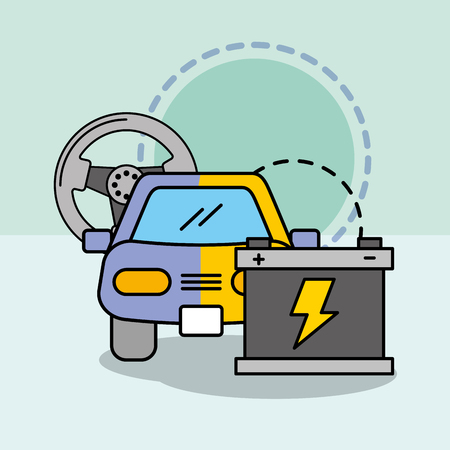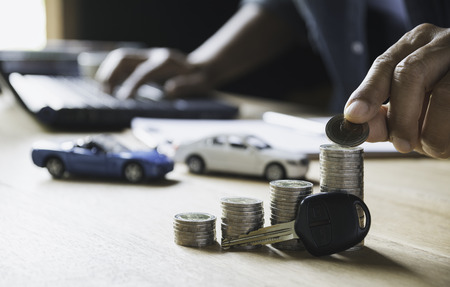Setting Realistic Expectations for Your Trip
If you’re planning a cross-country road trip, the first and most crucial step to budgeting wisely is setting realistic expectations. Before you get swept up in visions of endless highways and spontaneous detours, take a beat to really understand your travel style and priorities. Are you someone who loves cozy motels every night, or are you cool with pitching a tent at campsites? Do you want to eat out at diners and local hotspots, or will you pack a cooler and prep meals on the go? Your preferences will heavily influence your costs, so get honest about what matters most to you. Take time to map out not just your route, but also the kind of experiences you want to have along the way. This clarity will help you estimate expenses more accurately, avoid overspending on things that don’t align with your priorities, and keep your trip fun without busting your bank account. Remember: it’s about balancing comfort, adventure, and your wallet—so start by knowing exactly what you need (and what you can skip) before hitting the open road.
Mapping Out Your Route and Key Stops
Planning your cross-country road trip is where both the adventure and savings begin. With hundreds of possible routes stretching from coast to coast, mapping out your journey wisely can make or break your budget. Start by plotting your main start and end points, then research the most scenic byways, national parks, quirky roadside attractions, and major cities you want to visit along the way. Prioritize must-see stops that truly matter to you—whether it’s Route 66 nostalgia, the grandeur of Yellowstone, or a legendary BBQ joint in Kansas City. For every stop, weigh the experience against its potential cost. Sometimes taking a slightly longer route unlocks free natural wonders or low-cost camping options that balance out higher fuel expenses.
Route Planning for Maximum Value
Use apps like Roadtrippers or Google Maps to estimate mileage, drive times, toll costs, and nearby affordable accommodations. This way, you can avoid pricey tourist traps and choose detours that offer unique experiences without draining your wallet. Don’t forget to factor in rest days to avoid burnout and costly last-minute hotel stays.
Sample Route Comparison Table
| Route | Total Miles | Main Attractions | Estimated Fuel Cost | Budget Accommodation Options |
|---|---|---|---|---|
| I-80 Northern Route | 2,900 | Yellowstone, Chicago, Lake Tahoe | $350 | Motel 6, KOA Campgrounds |
| I-40 Southern Route | 2,700 | Grand Canyon, Nashville, Amarillo | $320 | Hostels, State Parks |
| I-10 Southernmost Route | 2,400 | Phoenix, New Orleans, Houston | $280 | Airbnb Rooms, Rest Stops |
Pro Tip:
If you’re traveling with friends or family, share the planning duties—each person picks a favorite stop. This keeps everyone engaged and helps distribute costs fairly. Remember: A well-mapped route means less time lost to backtracking or scrambling for last-minute accommodations—and more money saved for those bucket-list experiences.

3. Crunching the Numbers: Fuel, Food, and Accommodation
When it comes to budgeting for a cross-country road trip, your wallet will thank you for getting real about the big-ticket expenses: gas, food, and where you’ll lay your head at night. First up is fuel—no surprise here, but it’s going to be one of your biggest costs. Use apps like GasBuddy to check real-time prices along your route and map out refueling stops in states with cheaper gas taxes. You’d be surprised how much you can save just by planning ahead, especially if you’re piloting a thirsty SUV or hauling a camper.
Next on the hit list is food. Roadside diners and iconic drive-thrus are part of the American adventure, but eating out for every meal adds up fast. Balance those splurges with grocery store runs for snacks, sandwich fixings, and drinks. Many major chains offer loyalty programs or app-only discounts—think Starbucks rewards or McDonald’s deals—which can stretch your dollar when cravings hit hard after a long day on I-40.
Accommodation is where things get interesting. Sure, hotels offer comfort, but they can eat into your budget quick. Check local deals on sites like Priceline or Hotwire for last-minute steals, or consider mixing things up with budget motels, campgrounds, or even free overnight parking at select Walmarts if you’re RV’ing it. Don’t forget platforms like Airbnb or Hostelworld for unique stays that might save you cash and give you a more local flavor.
Ultimately, smart budgeting comes down to using real-time tools and keeping an eye out for local deals as you roll from coast to coast. The open road is full of surprises—so keep your options flexible and your budget tight, and you’ll rack up miles without emptying your bank account.
4. Smart Packing and Vehicle Prep
One of the best ways to stick to your cross-country road trip budget is by packing smartly and prepping your vehicle before you hit the highway. Packing strategically isn’t just about saving trunk space; it’s about avoiding unexpected expenses that can pop up when you’re far from home. Think of it as setting yourself up for a worry-free ride, where you control the costs and keep surprises at bay.
Pack Like a Pro: Essentials Only
Overpacking not only weighs down your car—hurting gas mileage—but also makes finding what you need a hassle. Keep your gear streamlined by focusing on essentials. Here’s a quick checklist to keep your load light but complete:
| Category | Must-Haves |
|---|---|
| Emergency Kit | First aid kit, flashlight, jumper cables, tire repair kit |
| Comfort Items | Pillow, blanket, reusable water bottle, snacks |
| Entertainment | Playlists, audiobooks, travel games |
| Tech & Power | Chargers, power bank, car mount for phone |
| Clothing | Layered outfits suited for changing climates |
| Documents | License, registration, insurance, roadside assistance info |
Tune Up Before You Take Off
A well-prepped vehicle saves money in the long run by preventing breakdowns and costly repairs mid-trip. Before you head out, schedule a pre-trip inspection or DIY checkup. Here’s what to focus on:
- Tires: Check tread and pressure—underinflated tires burn more fuel.
- Fluids: Top off oil, coolant, windshield washer fluid.
- Brakes: Listen for squeaks and have them checked if needed.
- Batteries & Lights: Make sure everything’s charged and working.
- Spares: Carry a spare tire and the tools to change it.
Pro Tip: Pre-Packing Test Run
A day or two before departure, pack your car and take a short drive around the block. This test run helps you ensure nothing is rattling around and that your load isn’t too heavy—both for comfort and safety.
A Smooth Ride Is a Cheaper Ride
Packing smart and prepping your car are non-negotiable steps for anyone serious about sticking to their road trip budget. With fewer breakdowns and no last-minute purchases for forgotten items, you’ll be free to focus on the open road ahead—and all the adventures waiting just beyond the next mile marker.
5. Money-Saving Hacks on the Open Road
When it comes to keeping your cross-country road trip budget-friendly, tech is your best copilot. Start by downloading apps like GasBuddy and Upside to track down the cheapest gas stations along your route. Not only will this save you a few bucks at every fill-up, but it also makes route planning more strategic—sometimes, taking a quick detour can mean big savings at the pump.
Loyalty Pays Off
If you’re hitting up major hotel chains or popular fast-food stops, sign up for their loyalty programs before you leave home. Brands like Marriott Bonvoy, Hilton Honors, and even Starbucks Rewards offer points or discounts that add up quickly on long trips. Many roadside motels and convenience stores have punch cards or mobile rewards, too—so don’t overlook the small stuff.
Eat Smart—But Still Savor Local Flavors
Skip the tourist traps for meals and instead use apps like Yelp and Google Maps to find local diners where the portions are hearty and prices fair. For snacks and picnic lunches, stock up at grocery stores rather than pricey rest stops. A small cooler packed with essentials lets you enjoy spontaneous roadside picnics—a true American road trip rite of passage.
Creative Solutions for Overnight Stays
If you’re open to adventure, consider alternatives like camping at national parks or using platforms such as Harvest Hosts for unique stays at vineyards and farms. Even Walmart parking lots are a safe (and free) place to crash if your rig is set up for overnighting. These options not only slash lodging costs but also make for memorable travel stories.
Stretch Every Dollar Without Missing Out
Finally, keep an eye out for local deals and free attractions along your route—visitor centers often have coupons or tips on hidden gems. With a little creativity and the right digital tools, you’ll maximize both your mileage and your memories, proving that adventure doesn’t have to break the bank.
6. Building In a Contingency Fund
If there’s one lesson every road-tripper learns, it’s that the open road is full of surprises—some thrilling, others not so much. That’s why it’s crucial to factor in a contingency fund when budgeting for your cross-country adventure. You might plan your route down to the last mile and estimate expenses with military precision, but unexpected hiccups like flat tires, sudden weather detours, or a must-try roadside diner can pop up without warning.
As you build your budget, set aside an extra 10–20% of your total projected costs as a safety net. This cushion will help you handle minor car repairs, medical needs, or even spontaneous opportunities for fun—think last-minute concert tickets in Nashville or a quirky museum you stumble upon in South Dakota. The peace of mind that comes from having this buffer lets you enjoy the ride instead of stressing over every dollar spent.
For maximum flexibility, keep your contingency fund easily accessible. A dedicated debit card or a mobile payment app can be lifesavers on the road, ensuring you’re ready for whatever comes your way without dipping into funds earmarked for essentials. Remember: the best stories often start where the plan ends—so budget smartly and embrace those unexpected moments!
